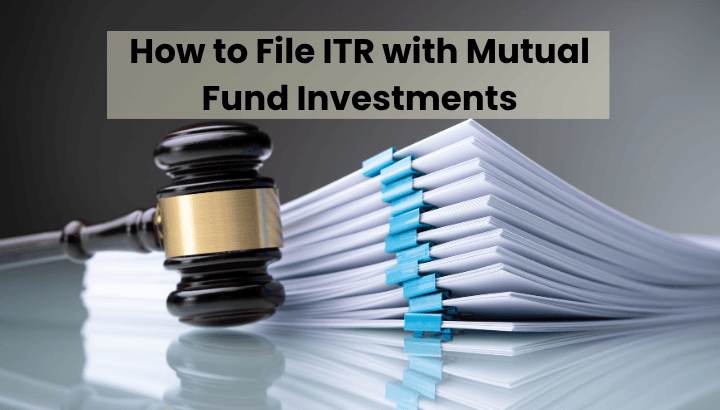How to File ITR with Mutual Fund Investments? Filing your Income Tax Return (ITR) properly is important, especially when you have mutual funds investment in India. Many investors takes stress during tax time, but it’s simpler than you think if you know the steps of filing your Income Tax Returns. Let’s explore the simple steps of filing an ITR so that you can follow the government rules and stress-free.
Know Your Mutual Fund Tax Liability
First, you need to understand how mutual funds are taxed in India:
1. Equity Mutual Funds
- Long-Term Capital Gains (LTCG): If you keep units for more than 12 months, then profits above ₹1 lakh are taxed at 10% without index benefits.
- Short-Term Capital Gains (STCG): If you hold units for less than 12 months, then profits are taxed at 15%.
2. Debt Mutual Funds
- LTCG: If profits from the units kept for more than 3 years, then they are added to your income and taxed according to your income slab.
- STCG: Profits within 3 years are added to your income and taxed according to your income slab rate.
Learn more about capital gains tax on mutual funds from this official source by the Income Tax Department.
How to File ITR with Mutual Fund Investments
Follow these simple steps to file your Income Tax Return if you have made investment in mutual funds:
Step 1: Collect Capital Gains Statement
Download your combined capital gains statement from Laevy (KFintech), CAMS, or your AMC’s website. This statement has all your withdrawal details.
Step 2: Choose the Correct ITR Form
If you are an individual salaried employee and pay your tax with capital gains, then ITR-2 Form is the right one for you. If you get income from business, then use ITR-3 Form.
Step 3: Report Capital Gains Properly
Fill in the capital gains part carefully and accurately by:
- Entering STCG and LTCG individually.
- Claiming reductions if you are eligible under Section 54F, which is for investment in residential properties.
How does the expense ratio affect long-term mutual fund returns?
Step 4: Match with From 26AS & AIS
Double-check your profits with your Form 26AS and the new Annual Information Statement (AIS), so that you can keep things aligned.
Step 5: File & Verify
Once all the details are entered correctly and matches your personal details, file your ITR online and e-verify your returns with the help of using Aadhaar OTP, online banking, or EVC.
Refer to the AIS and Form 26AS portal to verify your details.
Tips to Make It Easier
- Always make sure to withdraw using linked PAN number to keep your records clear and safe.
- If you have a complicated investments or holdings in internations fund houses, then consult a tax advisor.
- Make sure to keep the digital copies of all your withdrawal receipts and statements.
Stay Tax-Smart with Mutual Funds
When you invest smartly and follow the rules carefully, then mutual funds works better for you. Follow a best mutual fund portfolio strategy for 2025 and file your ITR on time before the due date to avoid notices and extra charges.
Always consider how to choose the right mutual fund in India for your risk tolerance to enjoy better returns after filing the ITR.
By filing your ITR properly, you protect your money and peace of mind. So, make sure your mutual funds investment in India count by filing it right and stay stress-free.

